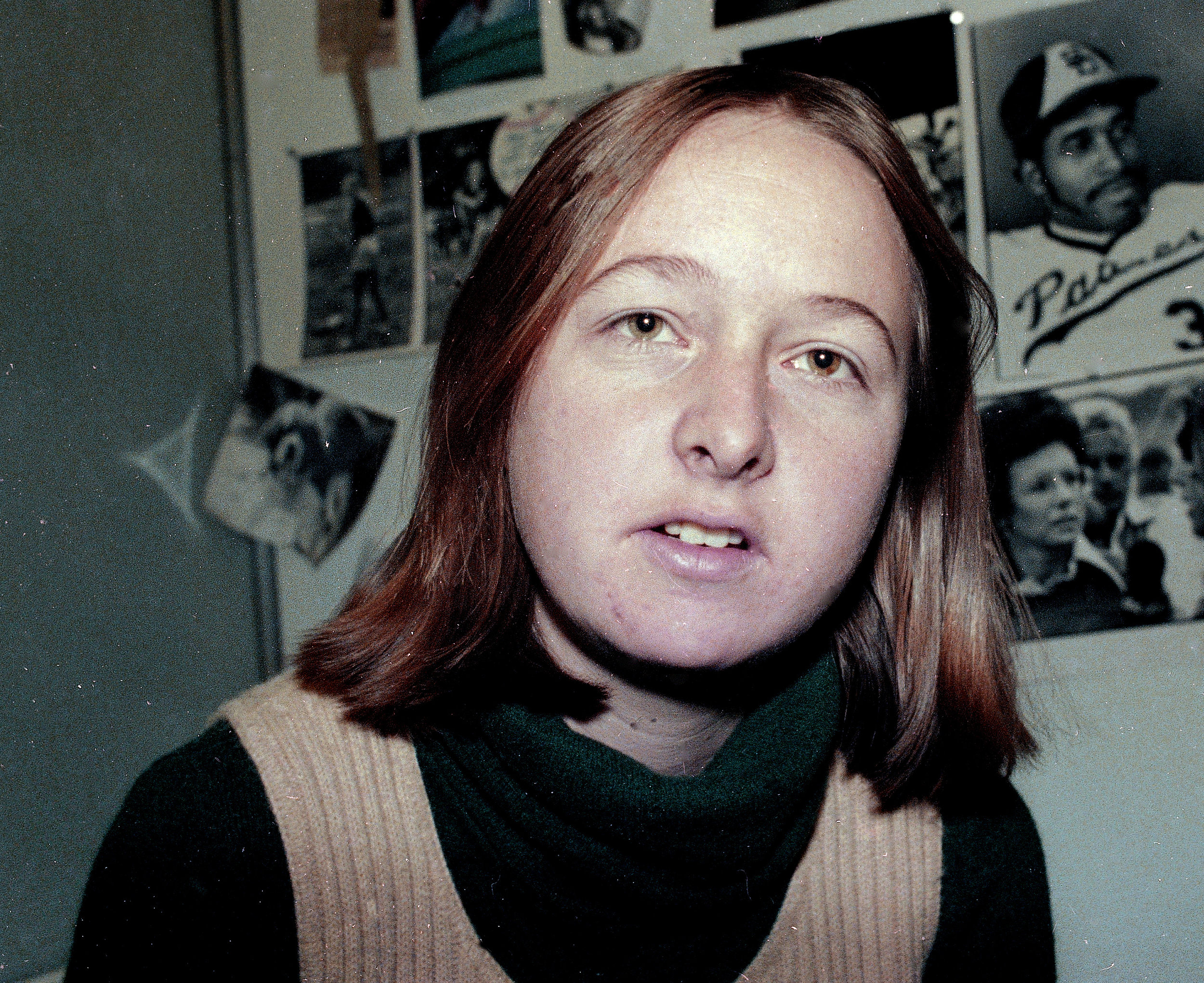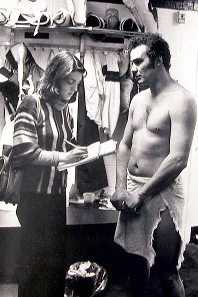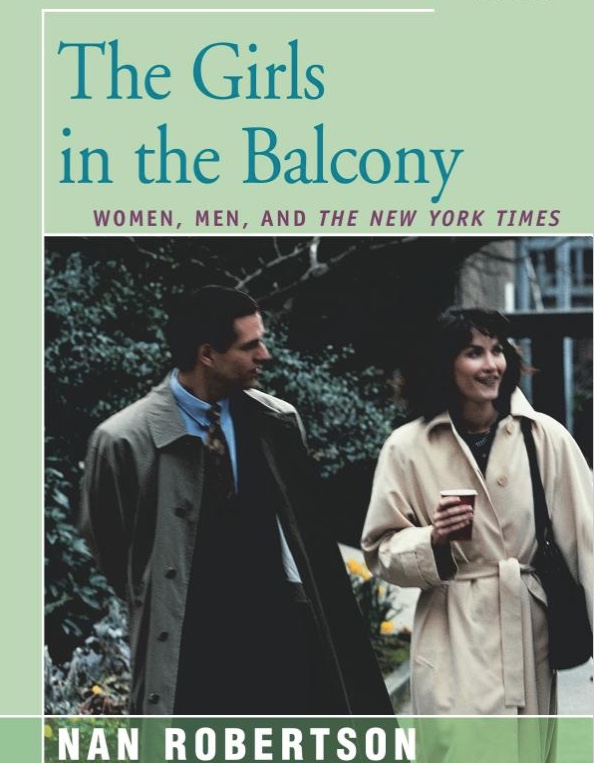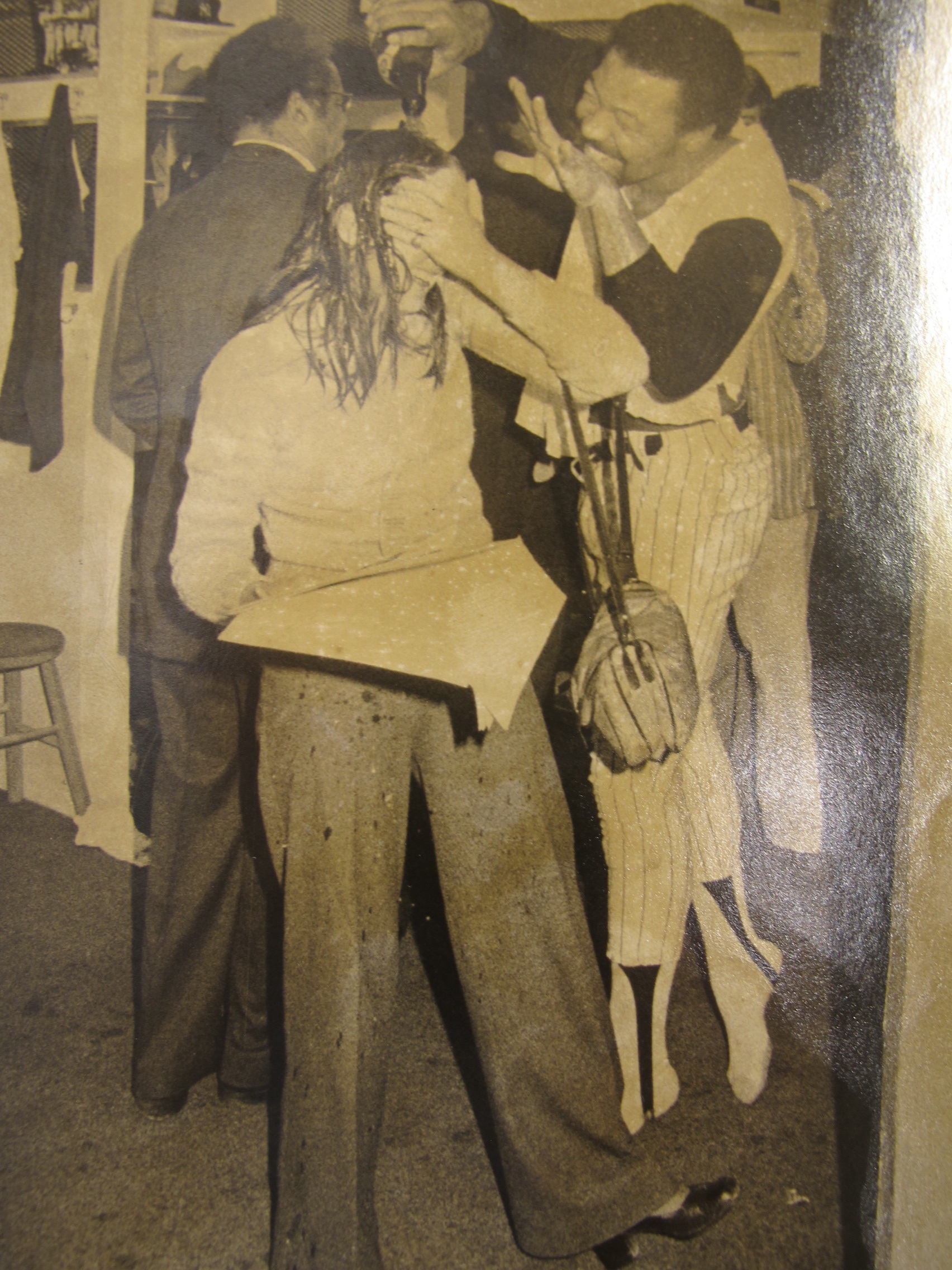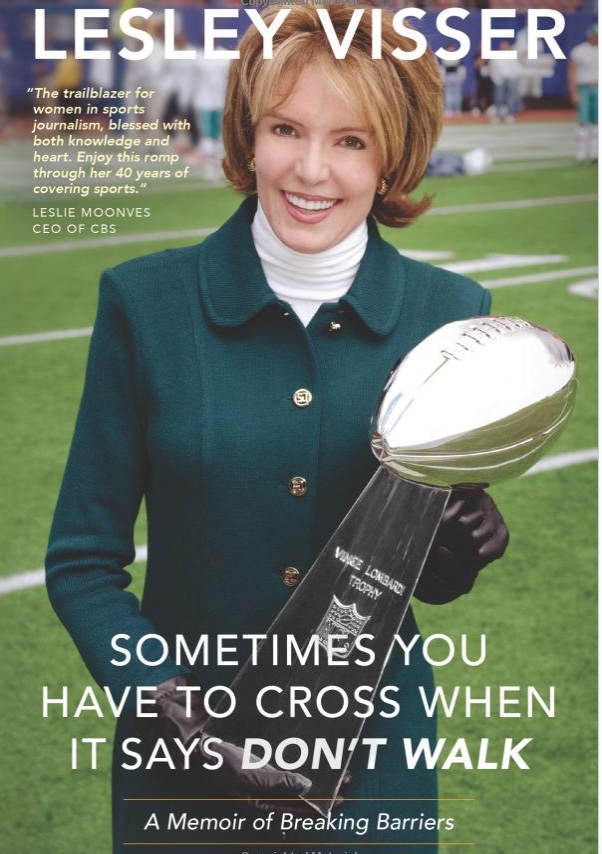Locker Rooms and Women Reporters: A to Z by Julie DiCaro
/Melissa Ludtke in her Sports Illustrated office in 1978
It's my great pleasure to share Julie DiCaro's well-crafted narrative that she wrote for this podcast. It is simply the best short history of women sports reporters' locker room struggles. With her use of revealing details and poignant examples, Julie narrates a magnificent story of what it was like to be a woman reporting on sports who ran into barriers – both structural and attitudinal – when it came to equal access they needed to interview athletes as male reporters do. Since interviews in baseball took place, by tradition, in locker rooms, access to locker rooms was the focus of my federal lawsuit, Ludtke v. Kuhn, and the locus of media attention.
Episode 6: Women in Pro Locker Rooms
Welcome to this week’s episode of Stick to Pods. I’m your host, Julie DiCaro.
Last week, Sports Illustrated published a piece on the culture of sexual harassment and abuse taking place inside the Dallas Mavericks organization, written by Jon Wertheim and the amazing Jessica Luther.
As many women who work in sports will tell you, we’ve made in-roads, but still have so far to go, particularly when it comes to handling harassment online and in our workplaces. And having to constantly deal with those issues keeps us from focusing on bigger issues, like getting more women in decision-making positions in sports and sports media. To their credit, Mavericks owner Mark Cuban hired a woman to take over at CEO of his team, and one with a background in HR at that.
But women still aren’t the norm in sports. Back in 2015, Graham Watson, a writer for Yahoo Sports, was barred from entering the Indianapolis Colts locker room by a male usher. And in 2017, Carolina Panthers QB Cam Newton pointed out in a press conference that he felt it was “weird” to hear a woman asking him a question about routes following an interaction with sportswriter Jordan Rodrique.
I also happened to FINALLY see the movie The Post this week, about 3 months AFTER a movie where Meryl Streep plays Katherine Graham should have had me in the theater, and the movie takes great pains to show just how often Graham walked into a room where she was the only woman.
All of this story got me thinking about how much women still have to deal with in the world of sports, and what it must have been like for those who blazed the trial for us back in the 70s and 80s. And that let me to this week’s topic: This is the story of the first women into pro sports locker rooms.
It’s tough to say who the first woman across the thresh hold into a pro sports locker room was, as several women were pushing for access in different sports around the same time. But back in 1975, Robin Herman, a 23-year old reporter for the New York Times, had been trying to get NHL teams to allow her access to locker rooms for a year, with no success.
Gordon Robertson, locker room guard, stops Robin Herman from entering the Chicago Black Hawks locker room (January 1975).
Robin Herman interviews Ken Hodges in the locker room.
Back then, almost all sports reporters were men, and access to the players as soon as they came off the ice was important to every sports writer, because that’s when the most genuine reactions and quotes were gotten. For women covering sports, going in locker room was never about nudity. It was about access to the players. And sometimes, also about basic human dignity. At Fenway Park in the 1970s, the women were not allowed to eat in the same area as the male sports writers, even though they were doing the same job.
Then, the 1975 All-Star game happened. During the pre-game press conference, someone asked the two coaches if they were going to allow women into the locker room. The coaches looked at each other, shrugged, and said “sure, they can come in.” So into the locker room went Robin Herman and her colleague Marcel St. Cyr.
Herman says, looking back, she was only allowed access that night because responsibility is diffused in an all-star game, with coaches managing guys that aren’t usually on their roster. Herman says the coaches opened the door on a whim, maybe even a dare. But that whim changed the course of history for women in sportswriting.
Upon entering the locker room, Herman says the cameras and microphones immediately swung in her direction, with someone yelling “there’s a girl in the locker room!” Though she insisted the game, not she, was the story, it was hard to convince her male colleagues that was the case. Said Herman, “the game was boring. A girl in the locker room was the story.” And if you need a reminder of how recent this was in the annals of history, Robin Hermann was in the first class of women admitted to Princeton – and that was in 1969.
Of course, some of the players responded exactly as you would expect pro athletes to. As Herman interviewed player Denis Potvin, another player yanked Potvin’s towel off, leaving him completely exposed.
Still, Herman said later “My post-locker room quotations showed patience and good cheer. I was 23-years old and fairly new to my job, and not yet beaten down by the abuse and slamming of doors that would follow this one-time opening.” Herman went on to say that wasn’t the end of the story. Owners and coaches in other cities continued to block locker room access to women, sometimes physically, sometimes using police. But once the barrier was broken, things started to change for women in sports.
At the same time Herman, the only woman in the sports department at the New York Times, was breaking the NHL barrier, Jane Gross was doing the same with NBA teams, while covering the Long Island Nets. The daughter of a sportswriter, Gross is the first to admit she got her job as the result of nepotism, but her timing was astute.
In 1974, women filed a class action law suit against the New York Times, titled Elizabeth Boylan v. New York Times.
Women who worked for The New York Times and in 1974 sued the newspaper for gender discrimination
It’s well-worth reading the whole story behind the lawsuit in Nan Robertson’s excellent book: The Girls In the Balcony: Women, Men, and the New York Times. Robertson writes:
“There were forty women reporters to three hundred and eighty-five men reporters, and eleven of those women were in family/style. Of twenty-two national correspondents, not one was a woman. Of thirty-three foreign correspondents, only three were women. There was only one woman bureau chief, just appointed to Paris. In the Washington bureau, with thirty-five reporters, only three were women; the number had not gone up in nine years, although the staff had nearly doubled in that time. There were no women photographers. Of thirty-one critics in culture news, only four were women. Reviewers of drama, music, movies, television and books were all male. The sports department had one woman and twenty-three men. There were no women on the editorial board, which had eleven members. There were no women columnists. Of the seventy-five copy editors on the daily paper, four were women. Almost all the lower-paying, lower-ranking jobs were confined to women.”
The New York Times suit was eventually settled in 1978, and the Times were forced to hire more women. Reading the writing on the wall, other newspapers began hiring women as well, and some of those women wanted to write about sports. By the mid 1970s, newspapers were resigned to the fact that they had to hire women reporters across the board, and that led to the hiring of some of the true giants in the industry, women like Christine Brennan, Lesley Visser, Claire Smith, and Michele Himmelberg. And we’ll touch on their stories as well a bit later.
But back to the locker rooms. To this point, no one had challenged MLB to open up their locker rooms to women. Enter Sports Illustrated’s Melissa Ludtke. Melissa grew up in a family of 5 children, to a baseball -loving mother and college football loving father.
Melissa Ludtke's family, 1962, Melissa is standing, far right
In 1977, Ludtke was assigned by Sports Illustrated to cover the World Series between the Yankees and Dodgers. Concerned about having access to players immediately following the games, Ludtke had been slowly and quietly lobbying the players for access to the locker room in the World Series. Having secured permission from the Yankees, Tommy John took Ludtke’s case to the Dodgers’ locker room. John told Ludtke, “I’m not going to tell you it was unanimous, but we know you have a job to do, so come on in.”
It’s worth noting that, until this time, women sportswriters, typically made up of a grand total of one at any given game, were forced to wait in the hallway outside the locker room while their colleagues talked to players immediately following the game. The women had to request access to a player, then wait for a team PR rep to bring the players out to speak to her, usually quite a long time after the player had spoken to male sports reporters. And after they had already told their story at least once to other reporters. As Betty Cuniberti, the first woman in the Dodgers’ press box said “Half the human race was shut out of this profession for no good reason.” She goes on to point out that, at the time women were trying to gain locker room access, there were no women in the US Senate and no women on the US Supreme Court. Any room with any kind of power at all was usually all men.
Yankees Manager Billy Martin had been allowing Ludtke to enter the locker room through a side entrance and sit on the couch in his office, which Ludtke later described as being like having a bleacher seat to what was going on at the players’ lockers.
As Ludtke describes in the terrific ESPN documentary “Let Them Wear Towels,” which you can find on Youtube, the 1977 Yankees locker room was filled with drama and large personalities, like Billy Martin, George Steinbrenner, and Reggie Jackson. The on-going name-calling and war of words WAS the story in 1977. And all that was taking place in the locker room – making access to the players immediately post-game vital to covering the team.
ESPN's Let Them Wear Towels, a documentary about women in sports media from the 1970s
MLB Commissioner Bowie Kuhn got word that Ludtke had been lobbying teams for access – and even though MLB hadn’t been directly challenged on their locker room policies, it was clear they’d been thinking about how to handle it when they were.
The commissioner’s office reached out preemptively to Ludtke, telling her they didn’t care what the Yankees and Dodgers said, that they controlled the locker rooms, and she would not be allowed in post-world series. Instead, she would wait in another area and players would be brought out to her after they had dressed – putting her at a huge disadvantage in covering the team. When she asked why the Commissioner’s office was making that decision, she was told the Commissioner’s office hadn’t polled the players’ wives about allowing women into the locker room and that the players’ children would be ridiculed at school. Publicly, Commissioner Kuhn said that having women in the locker room was unfair to players, other reporter, and fans.
And, just like that, Melissa Ludkte was shut out from the biggest sporting event of the year.
In Game 6 of the World Series, the Yankees’ Reggie Jackson, who had been sparring with coaching and management all season, hit three homeruns on three consecutive pitches. Ludtke stood in the hallway and watched as all her colleagues made their way into the locker room for the post-game reaction. For an hour and 45 minutes, Ludtke waited for Reggie Jackson to be brought to her for an interview. When Jackson finally did emerge from the locker room, he was dressed. He told Ludtke, “Melissa, I’m exhausted, I’m going down town. Sorry.”
Ludtke’s bosses at Sports Illustrated decided they weren’t going to allow Kuhn’s decision to stand. In 1977, they filed a lawsuit in federal court, under the title Melissa Ludtke and Time Inc (the parent company of Sports Illustrated) vs. Bowie Kuhn, Commissioner of MLB et al. There’s great video (27 minutes into the YouTube video) of a 26-year old Melissa Ludtke sitting with Howard Cosell and explaining why she needed access to locker rooms.
On Super Bowl Sunday, Melissa Ludtke talked baseball – specifically about her legal action against Major League Baseball – on ABC Sports.
The decision came down on September 25, 1978, with the federal district could finding that Kuhn’s decision violated Ludtke’s 14th Amendment Rights of Equal Protection and due process, including her right to pursue her profession. The court held that Ludtke had been treated differently from her colleagues based solely on her gender. That decision applied only to the New York Yankees and Yankee stadium, but it put other MLB teams on notice that their policies had to change. When Peter Ueberroth took over as Commissioner in 1984, he opened up MLB locker rooms to women across the board.
Not that being IN the locker rooms was always easy or fun. Sports are weird in that they are the only beat in which reporters are expected to interview players in various states of undress. And they’re usually cramped, smelly, humid – definitely not the kind of place anyone would choose to hang out. And though pro sports leagues were starting to mandate that women have locker room access, that doesn’t mean the players were on board. And while pro sports teams had to allow women into the locker rooms, they didn’t control what happened once they got in there.
While playing for the Detroit Tigers in 1990, Jack Morris infamously said to the Free Press’s Jennifer Frey, “I don’t talk to people when I’m naked, especially women, unless they’re on top of me or I’m on top of them.”
Lisa Saxon, who covered the Angels for the LA Daily News remembers “"Going in the locker room, knots would get in my stomach," Lisa says. "It actually is a physically uncomfortable thing to do because you didn’t know what you would face. And at the very least you would have jockstraps thrown at you and dirty undergarments. And that was an everyday occurrence, and then you would just build onto that what might happen. And you just hoped for the best when you went in."
Lisa Nehus Saxon, right, Melissa Ludtke, center, Maya Ludtke (Melissa's daughter), left at the Baseball Hall of Fame's baseball diamond for the hall's induction of Claire Smith. July 2018
The wonderful Claire Smith, the first woman in America to have an MLB beat (she covered the Yankees for the Hartford Courant), tells a story in the ESPN documentary Let Them Wear Towels about standing in the hallway crying after being sworn at and physically pushed out of the Padres locker room in 1984 while up against a deadline.
Melissa Ludtke, left, Claire Smith, center, Lisa Nehus Saxon, right, in the Baseball Hall of Fame, celebrating Claire Smith's induction as the first women to ever be inducted into the hall.
[Addition to Julie's narrative] For Only a Game (NPR) story about women reporters, Major League Baseball and locker rooms, go to this audio story on its podcast. It was recorded during Claire Smith's induction in the Baseball Hall of Fame, July 2018
Smith describes being denied access as “humiliating,” saying being barred from the locker room made it look and feel like she was trying to get into someplace she didn’t have a right to be, which was obviously not the case. She also tells a heart-warming story about Steve Garvey riding to her rescue- coming out into the hallway to give her the quotes she needed and vowing to stay as long as she needed him – as long as she stopped crying.
Dave Kingman dumped buckets of cold water over Jane Gross’s head one two separate occasions in the locker room, and once sent a rat in a corsage box (with a note saying “my name is sue”) to Susan Fornoff of the Sacramento Bee. NHL player Tiger Williams, after calling Lawrie Mifflin, the first woman sports writer for the NY Daily News a “cunt” from across the locker room, picked her up and forcibly removed her from the locker room.
Cliff Johnson pours Champagne over Melissa Ludtke's head in the New York Yankees locker room, 1978
And things weren’t any better for the women covering the NFL and college football. Lesley Visser, who began covering sports in 1974 and who was the first woman to ever have an NFL beat, recalls that one of her credentials said right on it that it was invalid if presented by a woman or child.
49ers head coach Bill Walsh refused to allow women into the locker room, and, when asked why, told Michele Himmelberg of the Sacramento Bee that she was “interfering with his season.” Himmelberg also had to go to court in 1981 to get access to the 49ers locker room.
Michele Himmelberg sues the San Francisco 49ers for locker room access, 1981
Eventually, male newspaper editors backed their women reporters for the most part. And they began lobbying NFL and college teams to allow women the same access to players as the men had. Under pressure from the same papers that covered their team and gave them free advertising, the NFL was forced to give in.
Of course, once were women were allowed into locker rooms in any given sport, columinists, cartoonists, and the general public had a field day at their expense, portraying them as wanton women who just wanted to get a look at some naked guys. In truth, though, women never asked to go into locker rooms -they simply asked to have the same access to players that their male colleagues did. It was the sports themselves that decided post-game interviews should take place in the locker room, with lots of naked men roaming around.
If you think this issue was settled by the 1990s, think again. In 1990, Lisa Olson, who was covering the Patriots for the Boston Herald went public about being harassed by New England players in the locker room. Olson was confronted by several naked players, one of whom said “This is what you want. This is what you need. Want to take a bite out of this?” I’m leaving the names of the players out at Lisa’s request – she doesn’t want their reputations forever tarred because of that one bad day in her words, which is more generous than I would be able to be in her shoes.
Olson sued the team, which earned her being called a “classic bitch” by owner Victor Kiam. But Olson was vindicated when the players and team were fined by the league for their conduct. What followed for Olson were insults and death threats so severe, she wound up fleeing the country for Australia.
Dianemarie Collins interviews Lisa Olson in 2014 when the Association of Women in Sports Media presented its Mary Garber Award to her in recognition of her time as a pioneering sports reporter.
In Let them Wear Towels, many of the women featured talked about their sadness and loneliness because of the way they were treated by coaches, players, and their colleagues, and many went on to pursue other beats – most leaving sports altogether.
USA today’s Christine Brennan, the first woman to cover Washington’s NFL team, said in locker rooms, women have to smile and laugh and be a little bit deaf and a little bit blind, but stories persist to this day of players, some beloved by fans off the field, still engaging in harassing behavior towards women in the locker room. In the whisper network that exists among women sports reporter, everyone knows who those guys are, though the general public would probably be shocked at some of the names.
"In the field of sports journalism, female reporters have long been a rarity. The Washington Post stands out for assigning female journalists to lead its coverage of the four major Washington D.C. sports teams: Liz Clarke on the Redskins, Candace Buckner on the Wizards, Isabelle Khurshudyan on the Capitals and Chelsea Janes on the Nationals. They share what drew them to the male-dominated world of sports journalism and what the landscape looks like for women entering the field today." From Washington Post, March 6, 2017
I’m thrilled about our guest this week. Melissa Ludtke, former sports reporter for Sports Illustrated, sued for access to the Yankees’ locker room in 1978, and that case has long been considered a watershed moment for women in sports writing. Thanks so much for being here this week:
The podcast.

